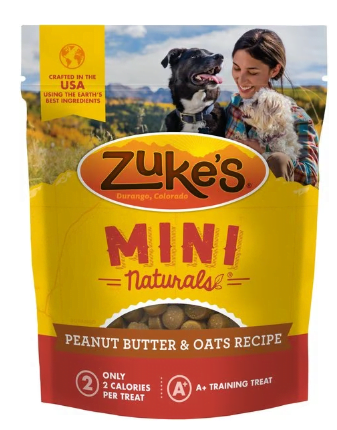5 Best Dog Treats: A Guide to Delight Your Furry Friend
When it comes to showing our furry companions some extra love, one of the most effective ways is through treats. Not only do dog treats bring joy to our four-legged friends, but they also play a crucial role in training, dental health, and overall well-being.
In this article, we’ll delve into the world of dog treats, exploring the various types, ingredients to watch out for, and tips on choosing the best treats for your canine companion.
- Best Dog Treats Recommended by the author (Top 3)
- The Importance of Dog Treats
- Different Types of Dog Treats
- What Makes a Good Dog Treat?
- Common Ingredients to Avoid
- Homemade vs. Store-Bought Treats
- Training and Rewards with Treats
- Treats for Dental Health
- Understanding Portion Control
- Top 5 Dog Treats on the Market
- Natural and Organic Treat Options
- Allergies and Special Dietary Needs
- Introducing New Treats Safely
- Making Treat Time Enriching
- Storing Treats Properly
- Conclusion
Best Dog Treats Recommended by the author (Top 3)
Zuke’s Mini Naturals Peanut Butter
Milk-Bone Soft & Chewy Beef & Filet Mignon
Blue Buffalo Health Bars Apples Yogurt Dog Treats
The Importance of Dog Treats
Dog treats aren’t just about satisfying your pup’s cravings; they serve multiple purposes. From training and behavior reinforcement to strengthening the bond between you and your dog, these tasty morsels play a vital role in your dog’s life.
Different Types of Dog Treats
Dog treats come in various shapes, sizes, and textures. From soft and chewy to crunchy and biscuits, there’s a treat for every preference. Some treats are designed to clean your dog’s teeth, while others offer additional nutritional benefits.
What Makes a Good Dog Treat?
A good dog treat should be not only delicious but also nutritious. Look for treats that are rich in protein and low in additives and fillers. Reading the ingredient label can give you insights into the treat’s quality.
Common Ingredients to Avoid
Steer clear of treats with excessive artificial preservatives, colors, and flavors. Also, avoid treats with high amounts of salt, sugar, and unhealthy fats. These ingredients can have adverse effects on your dog’s health.
Homemade vs. Store-Bought Treats
Deciding between homemade and store-bought treats depends on your preferences and your dog’s needs. Homemade treats allow you to control the ingredients, while store-bought treats often offer convenience.
My Favority Homemade Dog Treats Recipe

Training and Rewards with Treats
Treats are an excellent tool for training your dog. Positive reinforcement with treats can motivate your dog to learn new commands and behaviors effectively.
Treats for Dental Health
Dental health is crucial for your dog’s overall well-being. Opt for treats designed to promote dental hygiene by reducing plaque and tartar buildup.
Understanding Portion Control
While treats are wonderful, moderation is key. Be mindful of portion sizes, as overindulgence in treats can lead to obesity and other health issues.
Top 5 Dog Treats on the Market
1- American Journey Peanut Butter Recipe Grain-Free Oven Baked Crunchy Biscuit Dog Treats: Dry roasted peanuts give this treat a real peanut butter flavor that your dog will love.
2- SmartBones SmartSticks Peanut Butter Chews Dog Treats: Made with real chicken, vegetables and other healthy ingredients dogs love
3- Greenies Teenie Dental Dog Treats: Natural dog treats crafted with vitamins, minerals and other nutrients.
4- Milk-Bone MaroSnacks Real Bone Marrow Dog Treats: Crunchy on the outside and meaty on the inside for a flavor and texture combo that pooches of all sizes will love.
5- Milo’s Kitchen Chicken Meatballs Dog Treats: Home-style bite of mouthwatering, tender meatballs with real chicken!
Natural and Organic Treat Options
For health-conscious dog owners, natural and organic treats are a great choice. These treats prioritize quality ingredients without unnecessary additives.
Allergies and Special Dietary Needs
Just like humans, dogs can have allergies too. If your dog has allergies or specific dietary requirements, opt for treats that cater to those needs.
Introducing New Treats Safely
When introducing new treats, do so gradually. Monitor your dog for any adverse reactions, and consult your veterinarian if needed.
Making Treat Time Enriching
Treat time isn’t just about the treat itself; it’s an opportunity for bonding and mental stimulation. Use treat-dispensing toys to make treat time engaging.
Storing Treats Properly
To keep treats fresh and tasty, store them in an airtight container in a cool, dry place. Avoid exposing them to direct sunlight or humidity.
Conclusion
In the world of dog treats, options are abundant, and choosing the best for your furry friend requires consideration and care. Whether you’re training, rewarding, or simply sharing love, the right treat can make a world of difference in your dog’s life.
FAQs (Frequently Asked Questions)
Subscribe to our weekly newsletter below and never miss the latest article.











